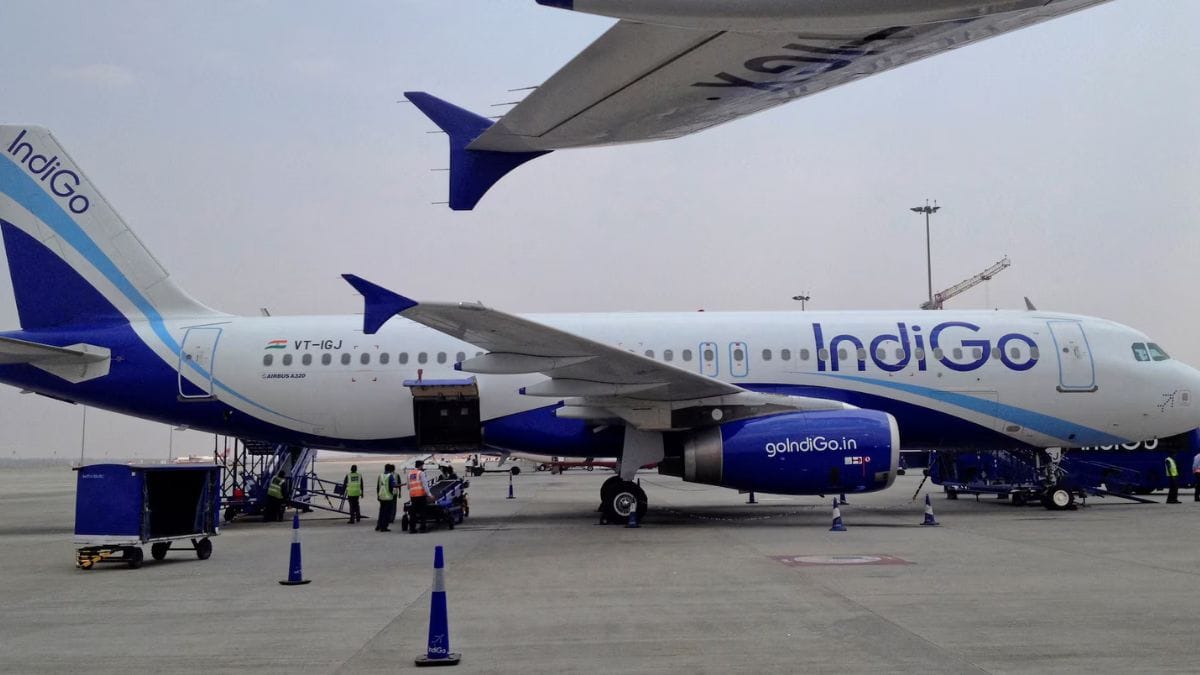On July 23, 2025, what began as a routine morning flight from Ahmedabad to Diu quickly turned into a tense emergency for 60 passengers and crew aboard IndiGo flight 6E-7966. The ATR 72-600 aircraft, registered as VT-IYA, was accelerating down the runway when an engine fire warning abruptly forced the pilots to abort takeoff and call for emergency assistance.
What followed was a textbook example of how swift action, experienced crew, and robust safety protocols can turn a potential disaster into a safe and controlled evacuation. Here’s a detailed look at what happened, how the airline responded, and what this incident means for Indian aviation as a whole.
1. The Incident: Fire Warning Mid-Takeoff
At Sardar Vallabhbhai Patel International Airport in Ahmedabad, flight 6E-7966 was cleared for departure and had begun its takeoff roll around 9:30 AM. Seconds into acceleration, the cockpit instruments displayed a fire warning related to engine number one.
Realizing the severity of the situation, the pilots initiated a rejected takeoff—a maneuver used to halt the aircraft before liftoff when continuing could prove dangerous. With presence of mind and adherence to emergency training, the crew managed to safely bring the plane to a stop before it could become airborne.
2. A Swift Mayday and Evacuation
Immediately after stopping the aircraft, the captain declared a Mayday and notified Air Traffic Control (ATC) of the emergency. Airport emergency response teams were dispatched within seconds, as per protocol. With smoke risk present and time critical, the crew initiated a rapid evacuation.
Passengers disembarked using emergency slides, assisted by cabin crew and ground responders. Thankfully, no one was injured, and all passengers were safely escorted to the terminal for further assistance.
3. The Crew’s Actions: Precision Under Pressure
The decision to abort takeoff came before reaching V1 speed—the critical point after which a plane is committed to taking off. Below V1, it is safe to reject takeoff, and in this case, the crew acted within seconds to prevent potential escalation.
The pilots followed DGCA and ICAO procedures: shutting down the affected engine, securing the aircraft, and executing passenger evacuation protocols. This quick response was vital in ensuring the safety of all aboard.
4. Investigations Underway
The Directorate General of Civil Aviation (DGCA), India’s top aviation safety regulator, has begun an investigation into the event. Initial reports indicate that while the fire warning was triggered, there may not have been an actual fire, suggesting a possible sensor or electrical fault.
The grounded aircraft is now undergoing detailed maintenance checks. IndiGo’s technical team is inspecting fire detection systems, engine mounts, and all associated electrical components to identify the source of the warning and rule out any further risk.
5. What Happened After the Evacuation
Once the aircraft was cleared and passengers were accounted for, IndiGo arranged accommodations, meals, and alternate travel plans for all affected flyers. The airline issued public statements assuring that safety is their highest priority and thanked passengers for their cooperation.
Passengers were also offered full refunds or rebooking options, as is standard in such situations. IndiGo’s handling of the aftermath was largely praised for its speed, transparency, and customer support.
6. Growing Pressure on Indian Aviation Safety
This event is one of several recent safety-related incidents in India’s fast-expanding aviation industry. From precautionary landings to aborted takeoffs and inflight mechanical issues, multiple airlines have faced scrutiny over maintenance practices and system reliability.
Earlier this year, an Air India Dreamliner suffered a runway excursion in Ahmedabad, and other carriers have also reported fire-related issues and emergency returns. The root cause often traces back to maintenance oversight, component fatigue, or faulty sensors—issues increasingly critical in a sector where speed of growth sometimes outpaces infrastructure.
7. Why Rejected Takeoffs Matter
In aviation, a rejected takeoff is one of the most time-sensitive and high-stakes decisions a pilot can make. If a problem is discovered after V1 speed, the aircraft must continue the takeoff and handle the emergency in flight. But if caught before that point—as in this case—the pilot can bring the aircraft to a stop safely on the runway.
The ability to recognize the threat early, stop the aircraft quickly, and evacuate passengers efficiently can be the difference between a safety demonstration and a tragedy.
8. Lessons for Travelers
This incident offers several takeaways for passengers:
- Stay Calm in Crisis: The cabin crew is trained extensively in emergency evacuations. Trust their instructions and remain calm to ensure your safety and the safety of others.
- Emergency Preparedness Works: Evacuation drills, safety briefings, and stringent checks are not formalities—they save lives.
- Know Your Rights: In the event of emergencies, airlines are obligated to offer compensation or alternative travel. Keep your boarding passes and receipts in such scenarios.
9. Regulatory Oversight Must Evolve
India’s aviation regulatory framework has improved, but incidents like these indicate a need for further strengthening. Regular audits, surprise inspections, and transparent reporting can help airlines stay accountable.
Maintenance practices, especially in low-cost carriers with large domestic fleets, must be continually updated to match the intensity of operations. Older aircraft models like the ATR 72-600 require special attention due to aging parts and higher risk of component failure.
10. Final Thoughts: A Crisis Averted, a Warning Heeded
While the aborted takeoff of IndiGo flight 6E-7966 may appear alarming at first glance, it is also a powerful testament to the effectiveness of aviation safety protocols when followed diligently.
The crew’s decisive actions, the calmness of passengers, and the timely intervention of emergency services turned a potentially life-threatening emergency into a controlled evacuation. It shows that behind every safe landing—or in this case, safe stop—there’s a network of human vigilance, technical expertise, and regulatory enforcement.
As Indian aviation continues to expand, safety must remain at the forefront. Incidents like this should serve not only as reminders of potential risks but also as case studies for improving preparedness, communication, and trust in the flying experience.
Conclusion:
The IndiGo Ahmedabad-Diu flight incident serves as a vital learning opportunity for the aviation industry. It reiterates the importance of early detection systems, pilot training, maintenance diligence, and the critical role of emergency procedures. While the cause remains under investigation, the outcome was clear: lives were protected, protocols worked, and once again, the strength of aviation safety culture was on full display.
Let’s hope future developments continue to prioritize passengers over profit—and safety over schedule.










